
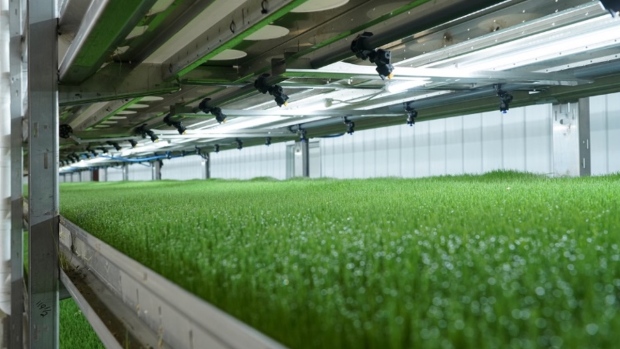
- Globally, methane produced by cattle contribute 14.5 per cent of global greenhouse emissions; dairy and beef producers face mounting regulatory pressure to reduce methane emissions from their cows
- Research shows a HydroGreen diet reduces methane emissions in cows by up to 1 metric tonne of CO2 equivalent per cow every year
- 12 HydroGreen machines can harvest 68,000 pounds of livestock forage per day, year-round, using 95 per cent less water, without pesticides or fertilizers on a fraction of the land
The world is facing an increasing challenge as global food insecurity stands at its highest level in 10 years. Before Russia’s invasion of Ukraine, the number of people living in food insecurity had already reached its peak following the pandemic, which resulted in unemployment and wage loss, disruption of supply chains, and volatility in food prices. Now, with blocked ports and export limits, countries that rely on Russia and Ukraine for staple foods are at a loss.
Hunger is on the rise for many other reasons. The dairy and cattle industry are an important part of global food production with 700,000 cattle farms and ranches feeding millions of people in the US alone. As populations grow, dairy and cattle producers face complex challenges: feeding more people, navigating supply chain disruptions, managing the uncertainty of ongoing drought and extreme weather, all while remaining profitable.
The environmental pressures are present too. Livestock contributes 14.5 per cent of greenhouse gas emissions globally with a single cow producing up to 220 pounds of methane every year, so producers are under growing social and regulatory pressure to manage and reduce agricultural emissions.
Experts predict that nearly all new food production in the next 25 years will need to come from existing agricultural land, so the challenge is to shrink agriculture’s carbon footprint while sustainably boosting agricultural output.
Millions of people renouncing dairy is an unlikely prospect, nor is it necessary to dismantle an industry if meaningful solutions are available today, capable of tackling the multi-faceted challenges dairy farmers and cattle ranchers face.
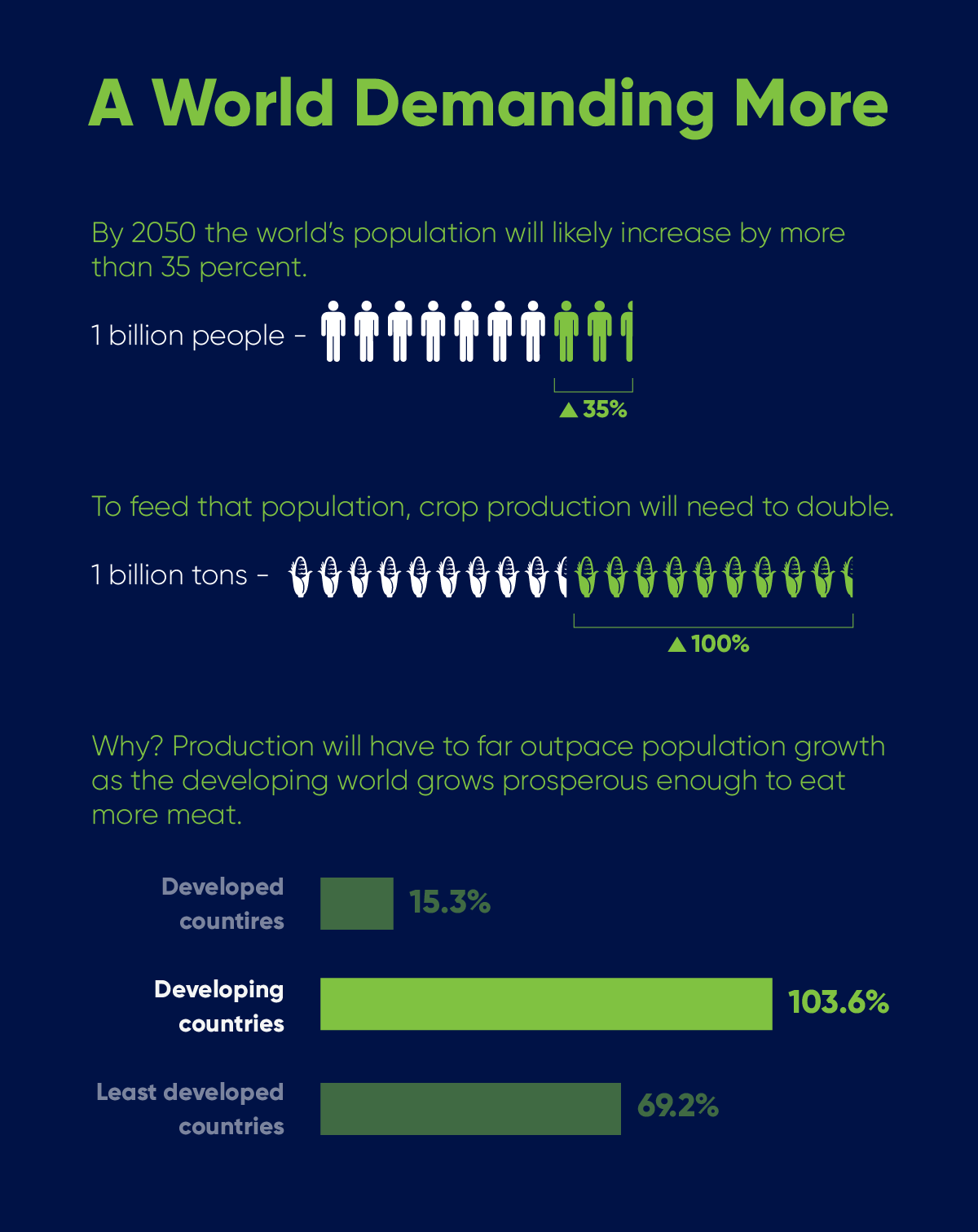
A greener way of farming
Reducing dairy cow emissions doesn’t need to mean raising fewer cattle. In fact, one emerging new solution benefits farmers and the planet, making cattle cultivation not just more sustainable environmentally, but more affordable, consistent, and efficient for agricultural producers themselves, even enabling them to grow more on the same farm footprint.
“HydroGreen was founded by a rancher who was looking for a low-maintenance feed growing system in Idaho, a drought-prone region… Now, with the market and our access to capital, we’ve been able to take that solution, and scale it to feed thousands of animals, rather than 50 or 100.” – Dan Schmidt, President, HydroGreen Global
The company at the forefront of this new approach is HydroGreen Global, whose Automated Vertical Pastures™ grow fresh forage hydroponically, indoors, in a controlled environment on a commercial scale. Growing indoors ensures the perfect growing conditions and allows plants to go from seed to feed in 6 days using 95 per cent less water than irrigated fields, which lose a high percentage of water to evaporation.
Vertical pastures grow crops on multiple layers of racks optimizing the cubic space of the facility, so one Automated Vertical Pasture™ can replace 500 acres of farmland, freeing that land for other purposes or crops that aren’t grown as easily indoors. HydroGreen’s automated, data-driven system allows farmers to produce nutrient-dense fresh forage right in their own facilities, 365 days a year.
The company was acquired in 2019 by CubicFarm Systems Corp. (TSX: CUB), known for its hydroponic solutions for cultivating produce for human consumption. For the two companies, the need for an alliance felt obvious in a world where every aspect of food production—from water supply to global distribution—is more unstable than ever.
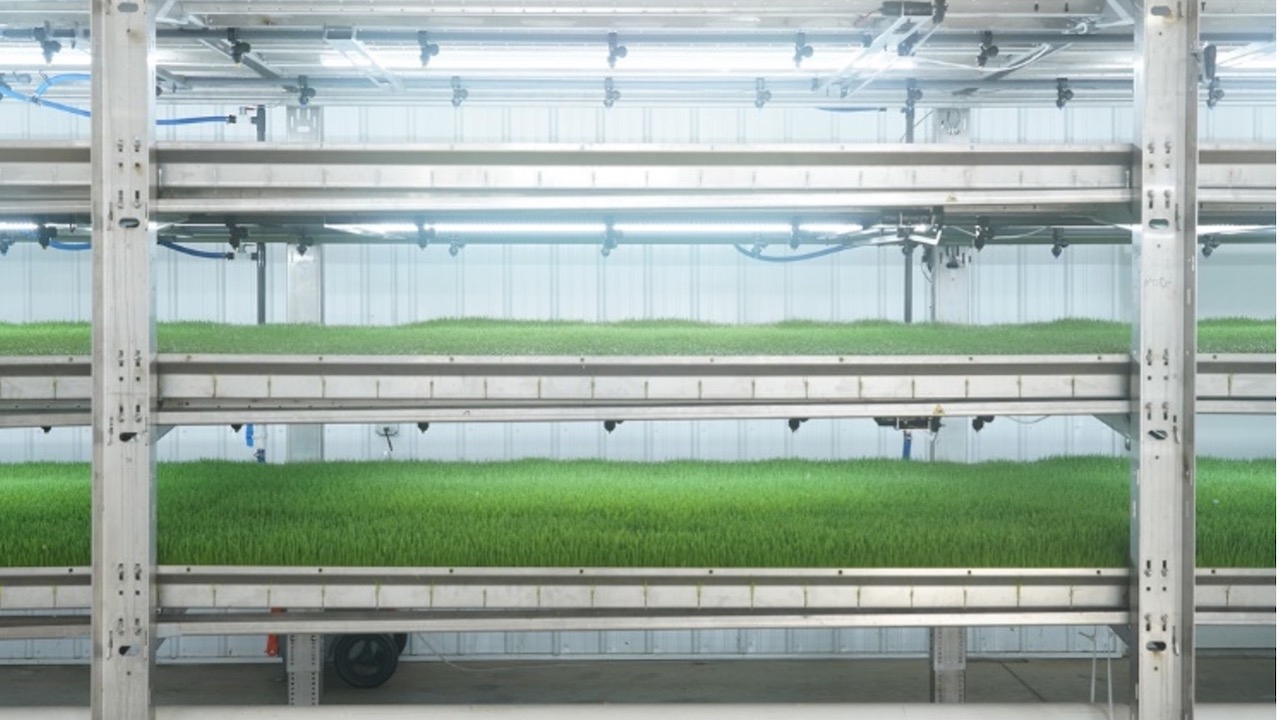
Efficient, hyper-local, and environmentally friendly
“There have been numerous supply chain issues, especially at the Canadian border causing massive disruption and destabilization in getting affordable beef and dairy onto dinner tables,” explains Dan Schmidt, HydroGreen’s president. “Even where that’s less of an issue, we’ve had these prolonged droughts across most of the western United States. If there’s a lack of rain, a lack of freshwater, you still need crops in order to feed animals.”
That’s why HydroGreen isn’t just about a more sustainable future. Certainly, reducing emissions is a critical goal—but Automated Vertical Pastures™ put the power back into the hands of farmers, enabling them to produce consistently high-quality dairy, every single day.
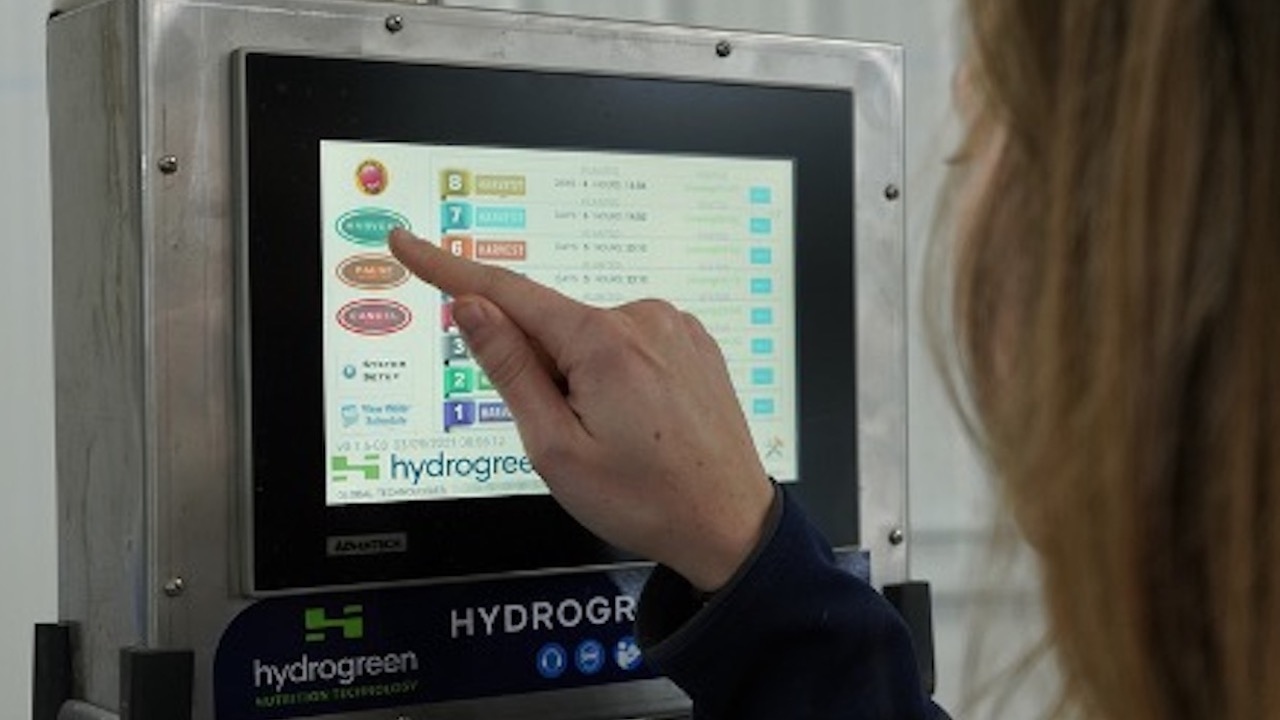
“HydroGreen was founded by a rancher who was looking for a low-maintenance feed growing system in Idaho, a drought-prone region,” Schmidt continues. “Now, with the market and our access to capital, we’ve been able to take that solution, and scale it to feed thousands of animals, rather than 50 or 100.”
Localizing livestock feed for a new world
Producing feed onsite reduces farmers’ carbon footprint and removes uncertainty around the reliance on global supply chains. But it’s really through HydroGreen’s superior nutrition that methane emissions are reduced, and the quality of the final dairy product greatly improved.
Each time they set up the Automated Vertical Pastures™ system, HydroGreen selects a nutritious blend of sprouted grains that can be sourced locally, within the customer’s region. Because the blend is grown in a low-stress, indoor hydroponic environment, the forage has an optimal nutritional content, and higher levels of the simple sugars that are easiest for cows to digest.
Healthier livestock with lower emissions
The result? Healthier animals and lower methane emissions. The feed has been shown to reduce methane emissions by 20 to 25 per cent in dairy cows due to its naturally high sugar content, in part, thanks to being a very young crop, harvested at 6 days. The high sugar content helps digest and break down high starch content in the cow’s stomach more efficiently which results in lower methane emissions.
According to a 2021 research from Delliat Animal Nutrition & Health, feeding beef and dairy cows HydroGreen led to a 4.5 per cent increase in milk fat production and mitigated a staggering one metric tonne of carbon equivalent annually per cow. Findings also include a 10 per cent improvement in fiber digestibility, a 5 to 15 per cent increase in feed efficiency and a 12 per cent increase in feed intake for transition cows.
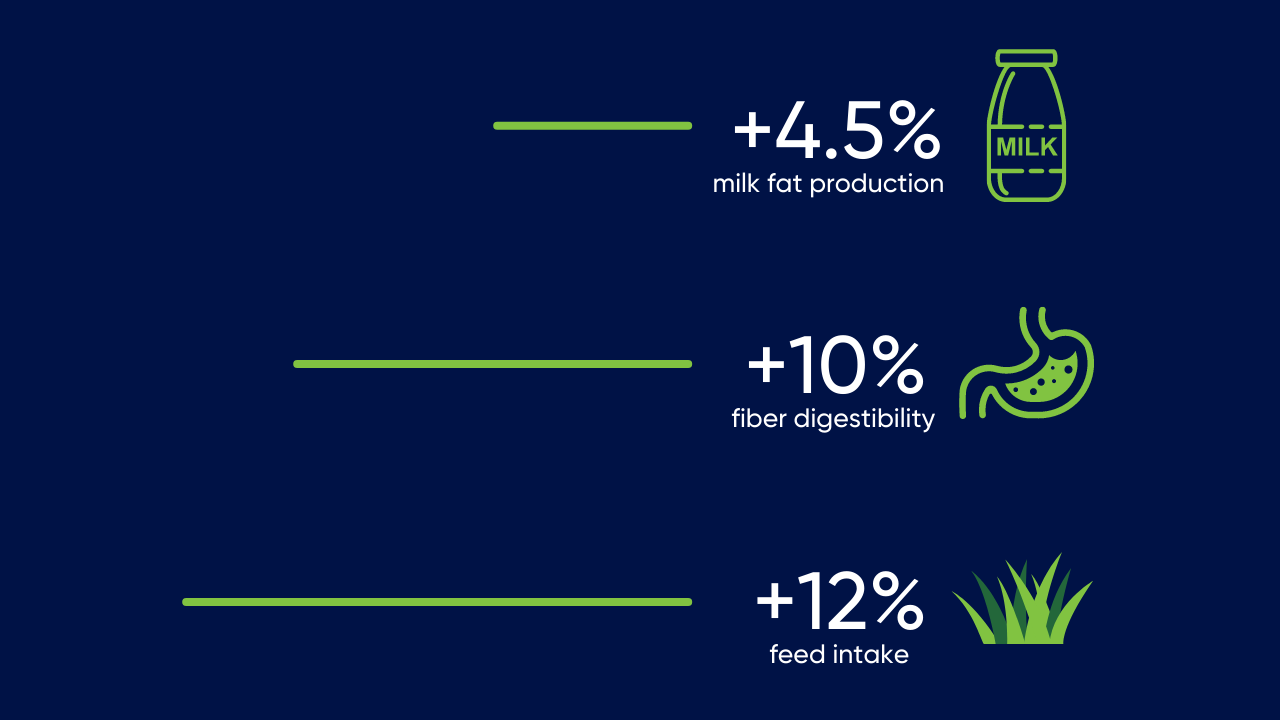
More recently, CubicFarm announced the preliminary results of its methane and carbon dioxide-equivalent reduction study (the “Carbon Study”) and beef finishing carcass study (the “Carcass Study”). In line with previous studies, the Carcass Study showed that feeding beef cattle HydroGreen fresh forage lowered methane emissions by approximately 40 to 45 per cent on a weight production basis.
According to the Carbon Study, six commercial scale HydroGreen Automated Vertical Pastures™ generating fresh forage have the potential to reduce over 5,000 metric tonnes of CO2e per year. The results of these two studies highlight the significant improvements in animal performance and a reduction in the environmental footprint of cattle, while providing compelling unit economics and payback period.
“HydroGreen is a unique product,” says Dr. Fernando Diaz, Nutritionist and CEO of Dellait® Animal Nutrition & Health. “It’s like a high-energy forage. It has very good content on fiber, along with very high energy coming from sugar, making it one of the most energetic ingredients in the market.”
The company modernizing livestock feed
With the global population of cows at around one billion, this is a revolutionary proposition, with the potential to help meet global carbon emission reduction goals, as well as improve farmers’ operational efficiency—and quality of life—worldwide.
Schmidt has seen firsthand the difference that a product like HydroGreen can make for agricultural producers at every scale
“It’s been make or break for a few customers in Utah,” Schmidt shares. “They’ve essentially said, ‘if we did not have HydroGreen to grow fresh forage or fresh feed, we’d have to sell our herd.’”
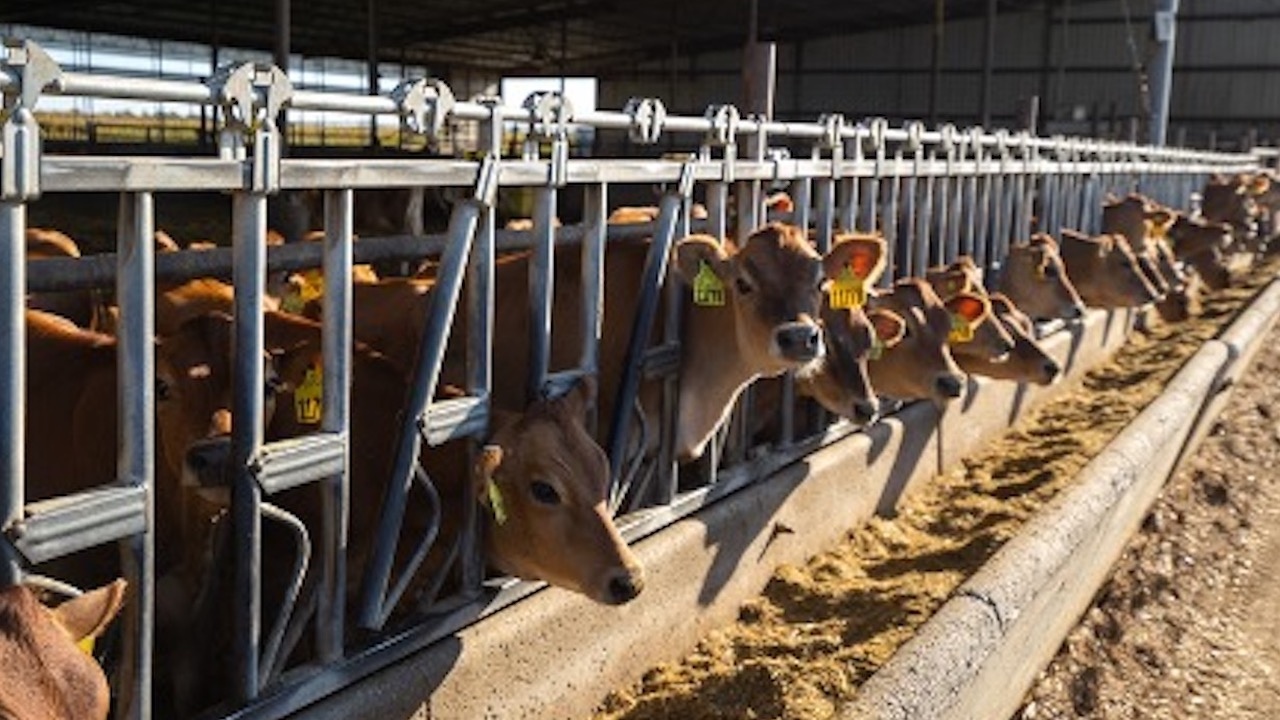
Global instability in weather patterns and the supply chain doesn’t look to be changing anytime soon. Since it helps farmers mitigate those issues and attain consistent output, the result has been a frenzy of growth, and investor interest, for HydroGreen.
Over the last year, the company has experienced rapid growth in order to service demand for their machines and will soon finish installing the world’s largest indoor Automated Vertical Pastures™ in Wyoming.
Despite this climate of uncertainty, the future looks bright for Schmidt and his team at HydroGreen.
“Something I’d like people to know is that farmers are eternal optimists,” he shares. “While they’re always optimistic that the next crop will be better, there’s always an unknown. We’re able to add peace of mind—they can control their costs, and know that no matter what, they’re going to have feed. HydroGreen adds consistency and takes away the unpredictability that comes from working with mother nature.”
For more information about HydroGreen, visit their website here.








